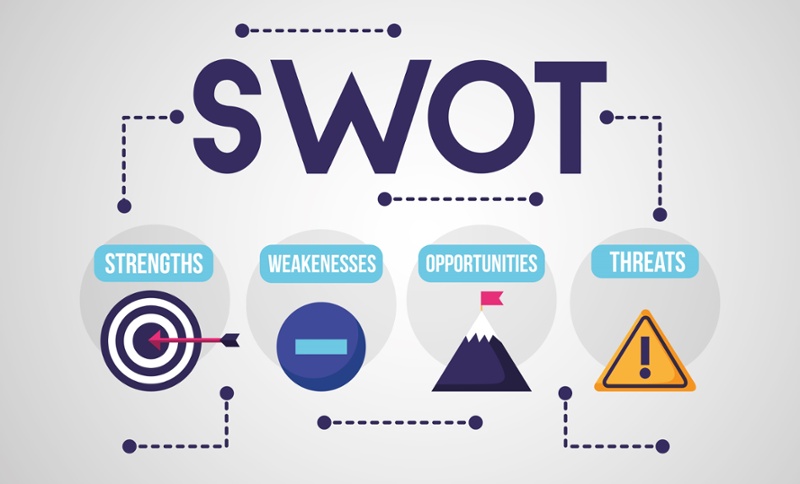A SWOT analysis is a list of the Strengths, Weaknesses, Opportunities, and Threats that your business faces. Essentially the main goal of a SWOT analysis is to help a business owner understand all the factors that go into making a business successful and it can also be used to plan your marketing. So what are the ins and outs of a SWOT analysis and why is it so great for business?
Why do a SWOT analysis?
Whether you are looking into new ideas, changing internal structures, looking for ways to pivot, or changing a plan in the middle of putting it into action, conducting a SWOT analysis before committing will help you make informed decisions. To run a great business, you should look at your processes on a regular basis to make sure they are as effective as possible. Checking to see if your current plans and methods are still the best way to move forward can help you keep up in a commercial environment that is always changing. This will help customers remember your business and give you an edge over your competitors.
How do you do a SWOT analysis?
You can't properly plan out the future of a small business without first looking at it from every angle. This means comparing the internal and external threats and resources. This is what a SWOT analysis does, and it does it in four easy steps that even new business owners can understand and use.
A SWOT analysis looks at the four letters in the acronym (Strengths, Weaknesses, Opportunities and Threats). This helps the business owner figure out what factors will affect the plan, action, or project. Companies can better explain what parts of a plan need to be noticed if they know exactly what these positive and negative factors are. When writing a SWOT analysis, you usually make a table with four columns so that you can compare each factor side by side. Opportunities and threats don't usually match strengths and weaknesses word for word, but they should be similar since they are linked. Once you've figured out what your risks are, you can then decide if it's best to get rid of internal weaknesses by putting company resources toward fixing them or if it's best to get rid of external threats by leaving the area of business that's at risk and dealing with them after your business has grown stronger.
Even though the business owner traditionally runs the SWOT analysis, it is also very useful to strategise with the rest of the team. Ask different staff members what they think, and talk about their suggestions. With the understanding of the team as a whole, you'll be able to look at your business from all angles.
What factors are being evaluated in a SWOT analysis?
A SWOT analysis evaluates internal and external factors and dynamics, for example:
Internal:
- Financial resources which include cash flow and investment opportunities.
- Location, tools, and equipment are examples of physical resources.
- Human resources (employees and target groups)
- Copyrights, logos, patents, and access to natural resources
- Employee programs, departmental structures, and operating systems
External:
Every company is affected by outside forces. Whether these factors are directly or loosely related to opportunities or threats, it is important to note down each one. External factors are usually things that you or your business can't change, like:
- Market trends like new goods, advances in technology, and changes in customer needs.
- Trends in the economy (local, national, and international)
- Funding (from donors, the government, and other places)
- Demographics
- Supplier and partner relationships
- Political, environmental and economic laws
What’s next?
After you make your SWOT outline and do your SWOT analysis, you will need to come up with some suggestions and plans based on the results. These plans should focus on taking advantage of strengths and finding ways to minimise flaws and threats. This is actually the part of developing a plan where you have the most room to be creative and come up with new ideas, but only if the analysis has been done right in the first place.
The bottom line
The bigger picture of your business should never be conducted in a casual way. Conducting a SWOT analysis affords you the luxury of looking at your business in a holistic way. From there, you can figure out how to fix your business’s weak points and make the most of its strong points. Once you create a sturdy way forward, you may need funding to act on your plans and begin growing your business. That’s where Merchant Capital comes in. So to fund your business from strength to strength in the next 48 hours, contact Merchant Capital today.

